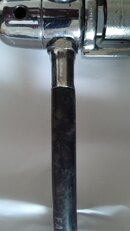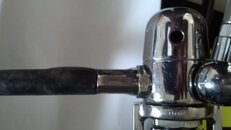I have a question and I apologize if I am crossing this invisible boundary. Why is switch to octo in question in this situation?
Octo is there for buddy sharing and a backup for your primary rig so why would one not switch to an octo? I always thought that entire purpose of buddy sharing was when you have a critical failure with your own system. In my case, for example I actually had to buddy breathe when I blew 0 ring on 1 tank and then on another tank when I swapped to it last year. But if I casually swim about my business and my primary goes bananas... my hand would reach for octo, breathe off it, figure out what is wrong with primary, check how much air I am losing and if I am comfortable with rate of loss then proceed with my dive. Am I on the fringe here? I mean I do dive with a pony bottle so how would breathing off octo be any different?
Octo is there for buddy sharing and a backup for your primary rig so why would one not switch to an octo? I always thought that entire purpose of buddy sharing was when you have a critical failure with your own system. In my case, for example I actually had to buddy breathe when I blew 0 ring on 1 tank and then on another tank when I swapped to it last year. But if I casually swim about my business and my primary goes bananas... my hand would reach for octo, breathe off it, figure out what is wrong with primary, check how much air I am losing and if I am comfortable with rate of loss then proceed with my dive. Am I on the fringe here? I mean I do dive with a pony bottle so how would breathing off octo be any different?




 A good gear check BEFORE the dive should find things like bumps in a hose, O-rings that are WAY over do for replacement... Mouth pieces ready to fall apart... Missing zip ties... Buckles that don't open or close right... Loose tanks.... and the list goes on...
A good gear check BEFORE the dive should find things like bumps in a hose, O-rings that are WAY over do for replacement... Mouth pieces ready to fall apart... Missing zip ties... Buckles that don't open or close right... Loose tanks.... and the list goes on...

